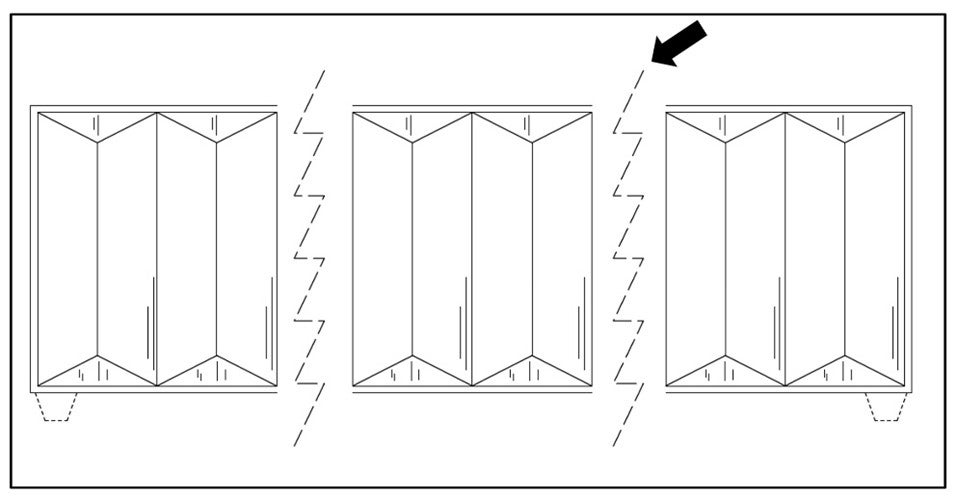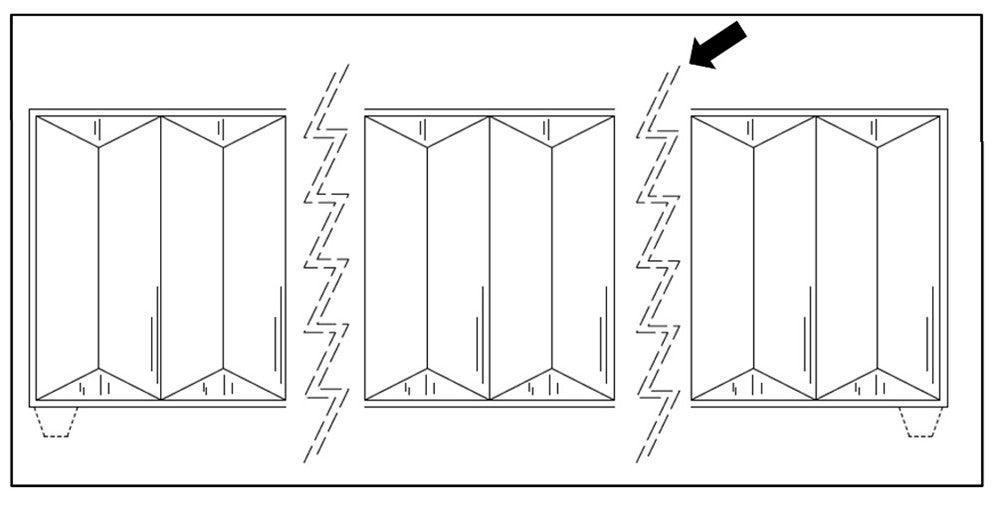Firm News
Bridge the Gap 2026 – Fordham School of Law
January 17, 2026 | 9:55 AM – 11:10 AM ET
Virtual
Leading the energy evolution.
Learn more
From compliance to the courtroom, we have you covered.
Learn more
Helping you focus on what matters – improving human health.
Learn more
Trusted advisors to leading insurers for 100+ years.
Learn more
Unlocking value in the middle market and beyond.
Learn more
Full-service legal advice from coast to coast.
Learn more
Applying radical applications of common sense
Explore More
Our standard-setting client experience program.
Explore more
Delivering life-changing help to those most in need.
Explore More
Our firm’s greatest asset is our people.
Explore More
Market-leading eDiscovery and data management services.
Explore more
The Pepper Center for Public Services
Explore more
Strategies helps businesses and individuals solve the complexities of dealing with the government at every level. Our team of specialists concentrate exclusively on government affairs, representing clients nationwide who need assistance with public policy, advocacy, and government relations strategies.
This unique program provides innovative and affordable opportunities to startups and early-stage emerging companies with a solid technology or scientific foundation. We help companies that have a quality management team in place and do not have other significant legal representation.
eMerge’s lawyers and technologists work together to deliver strategic end-to-end eDiscovery and data management solutions for litigation, investigations, due diligence, and compliance matters. We help clients discover the information necessary to resolve disputes, respond to investigations, conduct due diligence, and comply with legal requirements.
Stay ahead of the curve and in touch with our latest thinking on the issues that are top of mind across our practices and industry sectors.
Change happens fast in today’s turbulent world. Stay on top of the latest with our industry-specific channels.
Take a closer look at how we partner with clients to help them realize their goals.
Articles + Publications October 30, 2025
In recent years, the landscape of patent litigation has evolved significantly. Based on data obtained from Lex Machina®, the U.S. district courts have seen a general decline in overall patent case filings over the past decade — for example, from 5,806 filings in 2015 to 3,808 in 2024. This data also shows, however, an increase in design patent filings — from 320 filings in 2015 to 465 in 2024. These numbers might suggest a growing recognition of the value of design patents. This article explores these trends and offers insights and strategies for patent practitioners working in the design space.
Prosecution Trends
Given the recent uptick in design patent litigation, it is helpful for practitioners to understand how prosecution might be influencing these increased post-issuance challenges.
One hypothesis is that examination of design applications is more limited compared to utility applications, see, e.g., Amini Innovation Corp. v. Anthony California, Inc., 439 F.3d 1365, 1370–71 (Fed. Cir. 2006) (indicating design applications are defined by the drawings), the time to allowance of design applications might significantly outpace that of utility applications. A second, yet related hypothesis is that given the less involved and/or faster-paced examination process for design applications, examiners might not be issuing as many rejections as compared to utility applications. These trends, if true, could at least provide some reasoning behind how mistakes might fall through the cracks during examination, providing a basis for post-issuance challenges.
To test these hypotheses, we analyzed data collected through PatentAdvisor®. Because design applications focus on the aesthetic features of otherwise functional articles, they are arguably most comparable to utility applications in the mechanical space. Thus, we selected Tech Center 3700 (Mechanical Engineering, Manufacturing and Products) to compare against Tech Center 2900 (Designs).
Surprisingly, data obtained from PatentAdvisor® reveals that design and mechanical utility cases may exhibit similar patterns in terms of both average time to allowance as well as number and type of rejections received during prosecution. For example, in Tech Center 2900, applications on average receive a first office action by one year, 10 months, and reach allowance by two years, nine months. Similarly, applications in Tech Center 3700 on average receive a first office action by one year, nine months, and reach allowance by two years, 11 months.
Even more surprisingly, in Tech Center 2900, 70% of first office actions include a § 102 rejection, 72% a § 103 rejection, and 56% a § 112 rejection. Similarly, Tech Center 3700 shows rates of 62%, 75%, and 56% for §§ 102, 103, and 112 rejections, respectively. Final office actions in both tech centers reflect similar trends.
These patterns seem to indicate that examiners apply fairly consistent scrutiny across design and utility applications (at least in the mechanical arts). However, while Tech Center 3700 sees a 71.7% average allowance rate, the average allowance rate in Tech Center 2900 is significantly higher at 93.3%. While the above data relating to allowance timeframes and rejections for design versus utility cases still leaves open to debate the main reasoning behind recent design litigation trends, these overall allowance rates may provide at least a hint — e.g., it could be that while the general examination strategy for design versus utility applications is consistent, examiners ultimately push a higher percentage of design applications through to issuance than they do utility applications, which again could lead to stronger post-issuance bases for challenging these applications.
How might these trends tie into recent litigation trends? Turning back to the above-referenced data taken from Lex Machina®, in 2024 alone, there were 3,808 patent filings across U.S. district courts, with 465 of those including design patents. Of the 465 design patent cases, only two cases resulted in a finding of invalidity and/or unenforceability. In comparison, of the 3,343 utility cases, 38 resulted in an invalidity and/or unenforceability outcome. This means that at least in current times, the chances of having a patent invalidated at the district court level are about 1.1% for utility cases, but only 0.43% for design cases. These statistics, coupled with the prosecution trends discussed above, suggest that design patents may provide a stronger instrument for protecting patent rights at least in the mechanical space. Thus, it may behoove an applicant to consider filing a design application versus utility, or at least filing both simultaneously, to increase its chances of ending up with enforceable rights.
Strategies for Successful Design Patent Drafting
The above data and trends indicate the important role design patents may play in an overall IP portfolio. Applicants and practitioners should strongly consider whether design patents might help play a unique and crucial role in building a strong and enforceable set of patent rights. It is important that practitioners and applicants take great care in carefully drafting and prosecuting design applications to help maintain the current trends we’re observing, i.e., the enforceable nature of the design patent.
To that end, below are a few considerations that may help in drafting and prosecuting strong design applications to help increase applicants’ chances of avoiding post-issuance challenges down the road:


See July 21, 2025 Ex Parte Quayle Action in U.S. Application No. 29/900,572
Conclusion
As the current increase in design patent litigation may continue to rise, practitioners must adapt their strategies to ensure robust protection and successful prosecution. By focusing on comprehensive drawings and clear specifications, they can navigate the complexities of design patents and safeguard their clients’ innovations in an increasingly competitive landscape.
Firm News
Bridge the Gap 2026 – Fordham School of Law
January 17, 2026 | 9:55 AM – 11:10 AM ET
Virtual
Sponsored Events
ACG OC – 23rd Annual Private Equity Marketplace Deal Flow & Wine Tasting
January 15, 2026 | 5:30 PM – 8:30 PM PT
Ritz-Carlton
1 Ritz Carlton Drive, Dana Point, CA 92629
Podcasts
12 Days of Regulatory Insights: Day 11 – FTC Enforcement Trends in a New Age
December 18, 2025
Podcasts
The Trump Administration’s Debanking Initiative: Risk Mitigation, Regulatory Deadlines, and Sanctions for Noncompliance
December 18, 2025
Leading the energy evolution.
Learn more
From compliance to the courtroom, we have you covered.
Learn more
Helping you focus on what matters – improving human health.
Learn more
Trusted advisors to leading insurers for 100+ years.
Learn more
Unlocking value in the middle market and beyond.
Learn more
Full-service legal advice from coast to coast.
Learn more
Applying radical applications of common sense
Explore More
Our standard-setting client experience program.
Explore more
Delivering life-changing help to those most in need.
Explore More
Our firm’s greatest asset is our people.
Explore More
Market-leading eDiscovery and data management services.
Explore more
The Pepper Center for Public Services
Explore more
Strategies helps businesses and individuals solve the complexities of dealing with the government at every level. Our team of specialists concentrate exclusively on government affairs, representing clients nationwide who need assistance with public policy, advocacy, and government relations strategies.
This unique program provides innovative and affordable opportunities to startups and early-stage emerging companies with a solid technology or scientific foundation. We help companies that have a quality management team in place and do not have other significant legal representation.
eMerge’s lawyers and technologists work together to deliver strategic end-to-end eDiscovery and data management solutions for litigation, investigations, due diligence, and compliance matters. We help clients discover the information necessary to resolve disputes, respond to investigations, conduct due diligence, and comply with legal requirements.
Stay ahead of the curve and in touch with our latest thinking on the issues that are top of mind across our practices and industry sectors.
Change happens fast in today’s turbulent world. Stay on top of the latest with our industry-specific channels.
Take a closer look at how we partner with clients to help them realize their goals.
